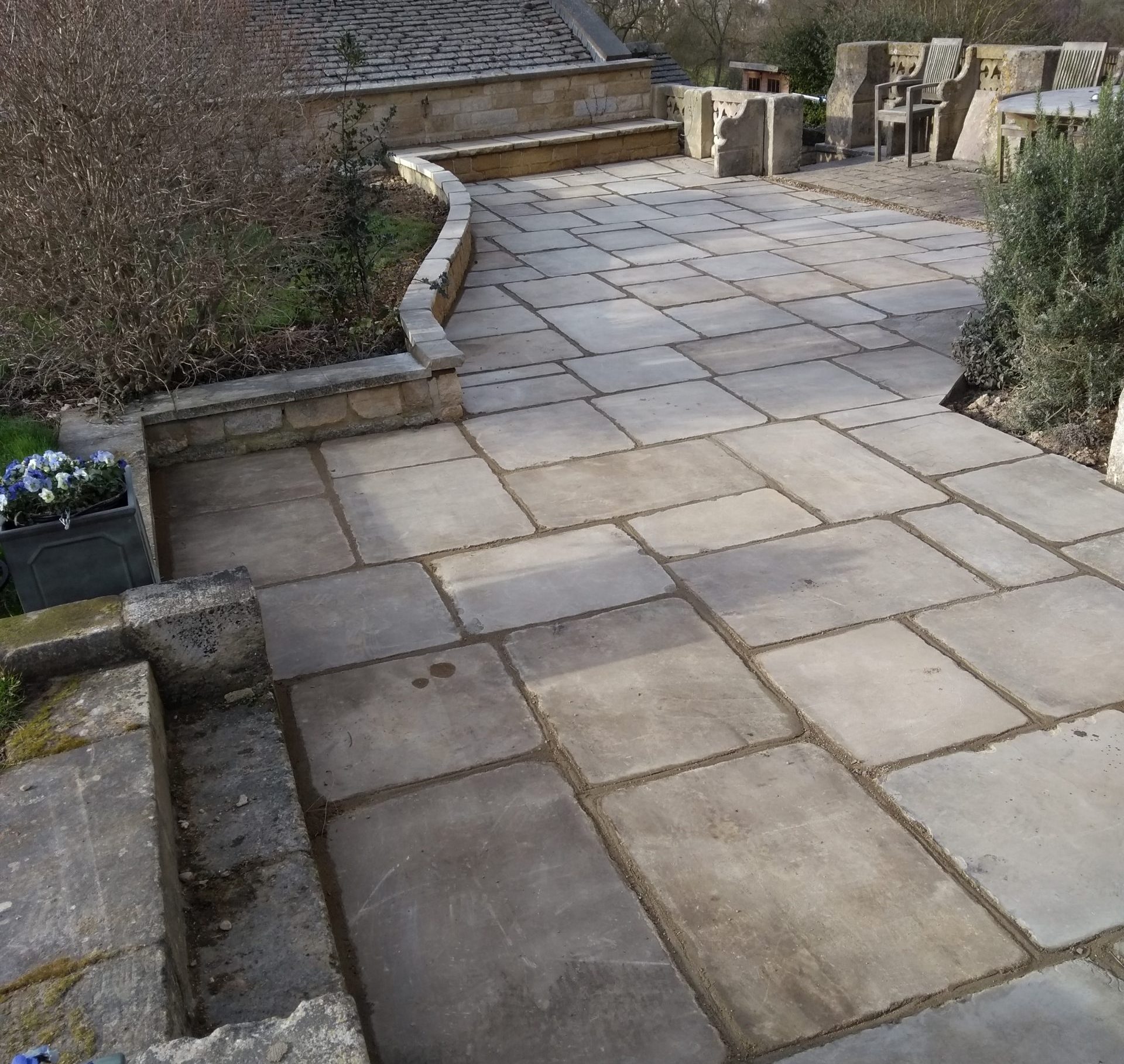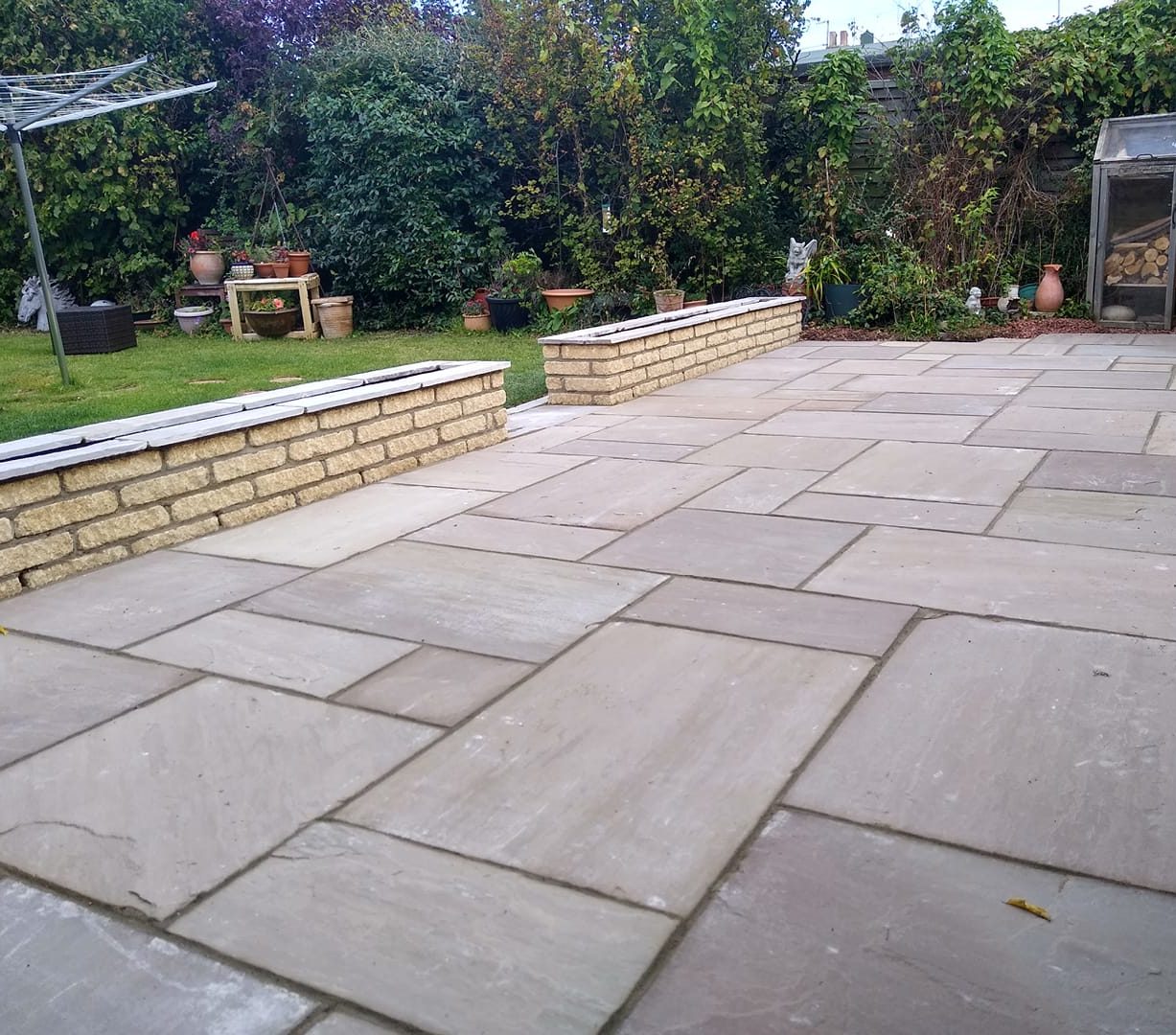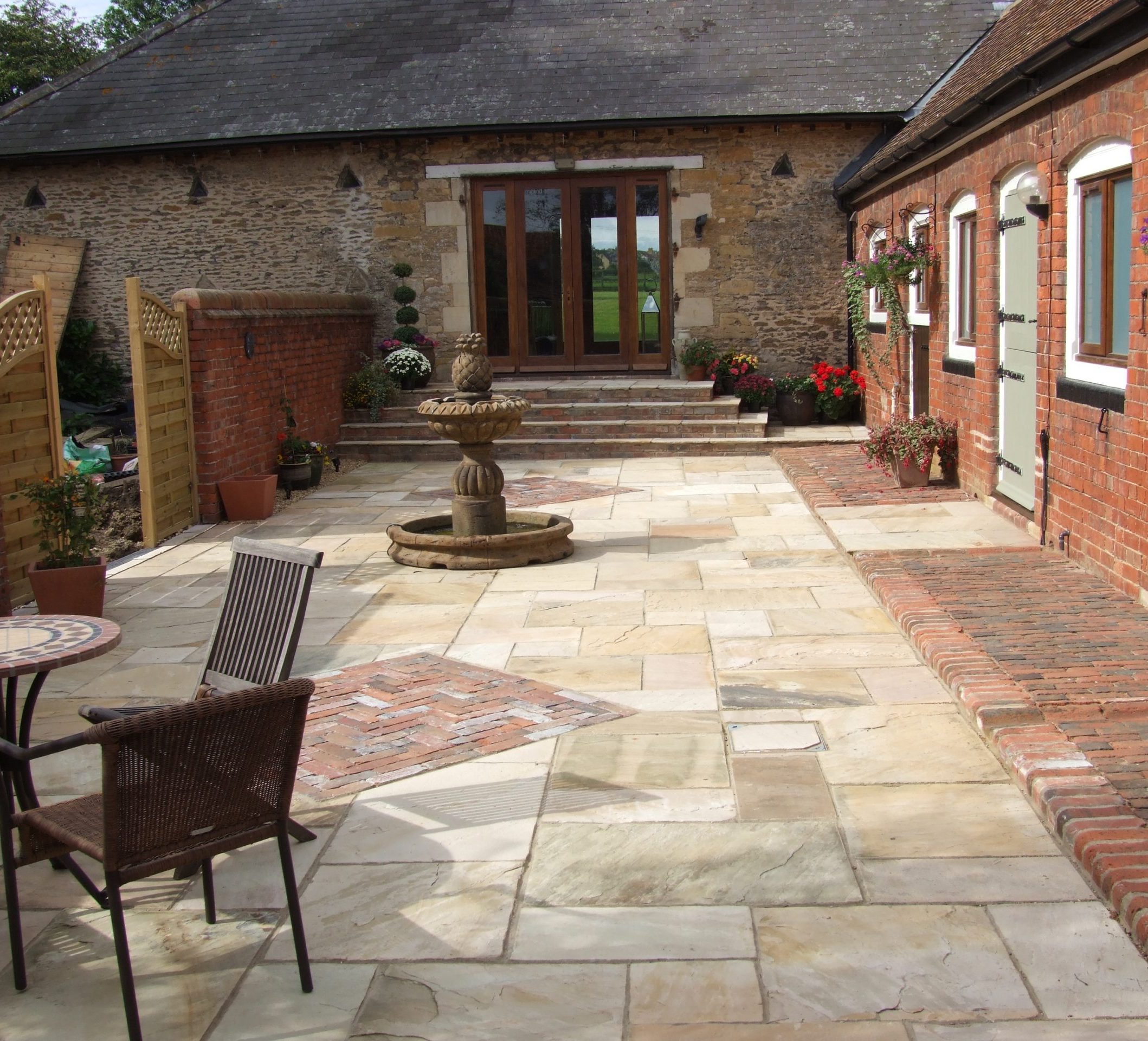A Beginners Guide To Natural Stone Patios
Why Use Natural Stone
If you are
considering a new patio then the beauty and durability of natural stone is a
great choice as it is an extremely versatile material being at home in both in
a traditional or contemporary setting. Natural stone in all its forms is a
great material to use in your own outdoor space.
One of the major benefits of natural stone patio pavers is their durability, literally lasting a lifetime if laid properly. As stone ages it takes on a beauty and patina impossible to replicate in a manufactured paving slab.

Another asset of natural stone is its versatility, there being numerous different types of stone available, as well as different colours, textures and, most importantly, costs to suit different budgets.
There are many alternatives in between such as limestone, granite, slate and vitrified paving such as porcelain.
Being adaptable, in addition to paving, stone can be cut to form steps and copings for walls, so the use of one material can create a common theme and unify the whole garden.
How Much Does Natural Stone Cost?
Cost is another factor to consider, good quality stone is more expensive than manufactured slabs.
At the top end of the market you have the new or reclaim local stone such as Yorkstone costing upwards of £80 per sq. mtr. At the other end of the scale is the imported Indian sandstone as low as £20 per sq. mtr. for a decent quality stone, very popular with the budget conscious.

Although there are cheaper natural stone alternatives they are usually thin, weak and often porous, drawing cement through the slab, which stains the surface.
If budget is an issue then you might be better using a good-quality concrete slab.
Premium Quality Stone
If you can stretch your budget then ideally you would use a local stone often found in buildings, historic gardens and walls.
Examples would be granite in Cornwall, golden limestone in the Cotswolds, slate in the Lake District and of course the timeless quality of Yorkstone.
If you can’t afford local stone, try to mimic its colour and geological type with an imported stone.
If you can match the stone of your particular property then you can achieve unity and coordination with house and outdoor space.

If you have a large area to pave then bigger slabs will give an illusion of space, high quality and give a more contemporary feel.
Smaller units are more appropriate in smaller gardens, where irregular sizes can often work.
Imported Stone
There is a whole host of different types and styles of imported natural stone.
The most popular, currently is Indian sandstone coming in many different forms. There are several different colours to choose from, such as autumn brown, golden brown, grey and even one called fossil.

Indian sandstone also comes in different finishes, such as hand cut, sawn, antique and honed so there is a style to suit most designs.
Other popular imported stone types include limestone which comes in several colours, slate and porcelain.
Installation And Maintenance
The one downside of using natural stone is the need to have it laid properly by a skilled landscaper.
When it’s not done correctly you’ll more often than not find the paving moves and sinks, and before long you’ll be getting someone to come and redo it.
When it comes to hiring a professional, always ask to see examples of previous work and check their experience.
Going for the cheapest quote at the expense of quality really is a false economy when installing a natural stone patio. Always get someone who knows what they’re doing and who won’t cut corners.
Regular and accurate patterns also need to be professionally done to ensure the joints are the same and the lines are straight and parallel.
The durability of your natural stone patio will be greatly affected by the quality of the groundwork beneath it, using a strong sub-base will ensure the paving does not move.
Maintenance of your stone patio should be fairly straightforward, in dry areas, most stone can simply be swept clean.
In wetter parts of the country, and in shady areas, some algae may develop, which can get slippery which can be remedied with a proprietary patio cleaner. Pressure washing is not advised as it can remove the aged patina and also loosen the joints.